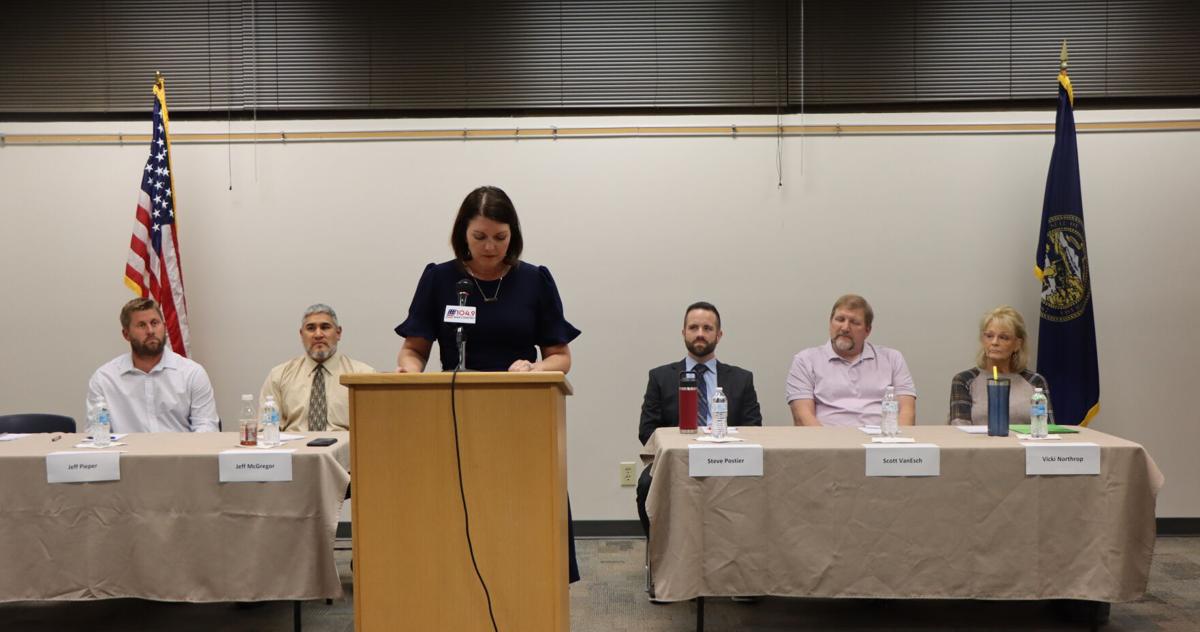An insider’s perspective on ARC’s 2022 Annual Industry Forum | CRA Notice

With Peter Manos, utility and smart grid expert from ARC Advisory
In this episode, ARC Senior Analyst Peter Manos shares his thoughts on the ARC Americas Forum, including an exploration of lessons learned and contacts made during the 2022 ARC Americas Industry Forum which took place held June 6-9 in Orlando, Florida.
More than 1,000 attendees learned how transforming factories, plants and infrastructure benefits end users and suppliers of the technology. Attendees also learned what their peers and industry leaders are doing today and what steps they are taking to prepare for the future.
Pierre Manos:
It is very impressive to see the high-powered know-how of our analysts and solution and software providers who are here, along with the equally impressive members of the user community. Even though I come to this Forum as an expert in the utility and smart grid industry, I appreciate not only the great conversations with the utility folks who are here, but also all the other exchanges that I’ve had with a lot of people in other industries. We are all preoccupied with the same things. And the value generated by digital transformation is truly incredible.
There has certainly been a data explosion in all industries, but in my industry, the history of originally having their billing systems based on one meter reading per month has now shifted to meter at 15 minute intervals or more often. So that’s a huge increase, isn’t it? One per month versus 96 per day. And when you add in electric vehicles and many other real-time transactions that are happening on the power grid right now, that explosion of data and how to leverage it drives incredible change. So we see that in every other industry involved in industrial automation, sensor data, it’s not just a 10-times increase, not even a 100-times increase, but more of a 1,000- or 10,000-fold increase. And the solution providers are doing amazing things and there are parallel cultural shifts and innovations happening in user communities. Everyone learns from everyone, regardless of industry.
Another thing I would say is that when you look at COP 26 in Glasgow, it was the first of the 26th annual international efforts where detailed industry-specific planning began. And that also includes cross-sectoral things that need to be done. In the energy transition, you are going to have, for example, waste from the pulp and paper industry that will become raw materials to create sustainable aviation fuel or use waste from the food industry as an input in an agro- industry, whether in active aquaculture or land-based farm applications. We’ve had cogeneration for many years, but more and more innovations are taking an industry’s waste and using it as feedstock for a facility that generates clean electricity using carbon capture.
For net zero and even negative carbon processes being developed, the big question is how will these things evolve? That’s the big deal because for some of these, it will take new solutions and new refinements to existing ideas for these things to grow.
This all ties in with an interesting view that many people, myself included, have had for many decades about what asset-owning operators might do in the future. It was a motivated vision for me looking at an interesting history with IBM, a history that goes back to the 1970s: IBM was building its IBM 360 mainframe systems, and with such a complex system, and other equally complex products that they were building, they developed a discipline called Component Failure Impact Analysis. And the luxury that this industry has is interesting – basically, with their semiconductor components, you can put all the components you’re going to work with when building a complex system through a rigorous reliability testing process. You can put large samples of each particular component in cards and put them in an oven, heat it up, test it, and speed up failures. The result is that in a short period of time, like a few weeks, you can get a year’s worth of operation, and you intentionally with these test chips for each component, complete this so-called “burn in test” process. ” . After burning them, you can determine the exact full curve of the tub, showing full life cycle performance and when it will fail, as well as component failure impact analysis. As I said, 50 years of history with this, they were able to accurately assign service personnel, when end devices were built with these complex assemblies, because they could mathematically calculate reliability based on reliability components, and construction and pattern.
The vision was how can we do this with a fleet of power grid asset infrastructure? How can we do this with power transmission, distribution and generation systems? Well, unfortunately, these devices are electro-mechanical devices and do not physically behave like microchips do. So you don’t have the luxury of accelerating failures and then having that exact, really accurate predictive capability. But with the data and models that asset owners are building, they now have some truly amazing new capabilities. Now, in terms of industrial automation, we are going to have the necessary simulation capabilities, not just machine learning, but also cognitive AI. So we’re going to be able to do component failure impact analysis on everything in the future.
I know it looks like pie in the sky. But if not, without this, how to economically build the necessary sustainability at the scale of the system? Well, you have to be able to model things from both a design digital twin and a working digital twin in a way that you create these incredibly revealing models that give you insight into how things are done in new and better ways. So again, I believe in engineering, in economics, in full life cycle cost, at a level where what is now called an “externality”, like the negative impacts on the economy or the health of communities affected by inefficiencies or even pollution, where those things that are currently considered “externalities” may not need to be considered that way in the next five or ten years . You might have the opportunity to include things in your calculations about impacts more broadly and getting industries to do things in their supply chains, for their customers and suppliers, where they drive value commercial for their services, products and brands, being part of a wider circle of responsibility for the quality of life in a broader way.
Looking at it that way, it’s exciting to realize the greater amount of creativity that we’re going to be able to unleash. It is the creativity unleashed in this conference, for example in the field of digital twins, that I see developing in the future in a very inspiring way.
Listen to the full episode here:






